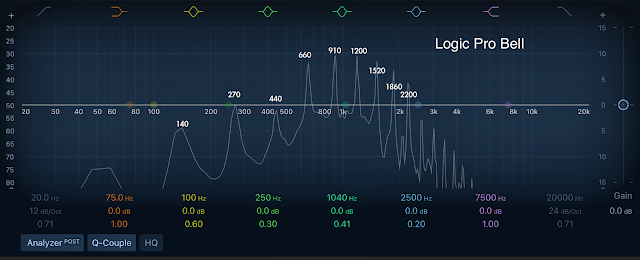Wired harmonic spectra of bells --always out of tune
When a string is plucked the harmonic series fellows an arithmetic progression (f, 2f, 3f, 4f, 5f, ...) (There is an assumption that the string is perfectly smooth and even). However, bells, chimes when they are played, the spectra do not follow the typical harmonic series, because their shape is irregular. The bell makers strive to tune the lowest 5 modes of vibration in the ratios 0.5 : 1 : 1.2 : 1.5 : 2 (Sethares, 2010). Yet, it is just the theoretical model, the tubular bell example below does not follow it.
Bell is an instrument that can come in a variety of shapes and sizes. The tubular bell is the most standard one if we really need to find an iconic representative of the bell family. The tube with one end covered shape of a tubular bell resembles the hollow shape of a bell. Here is the comparison of two spectra: a cello and an orchestral tubular bell. Both examples are playing the same note, A3=220Hz. The bell sounds A3 but the spectrum does not appear so and the partials above do not show an obvious harmonic relationship except the fifth interval of 440 and 660 partials. The combination frequency of 660Hz-440Hz=220 Hz, the A3 that is intentionally sound. The complex combination of the harmonic partials sounds several tones combining, sounding several notes sounding at the same time. Meanwhile, the louder partials in the spectrum are the partials above, not the fundamental, we are hearing the overtones above, the hollow timbre of the instrument.
While the cello demonstrates the clear strong fundamental of A3 on the spectrum and the upper harmonic partials fellow the harmonic series.
 |
| A spectrum of a tubular bell |
 |
| A spectrum of a cello |
The problem of playing dyad or even chord
Sethares, W. A. (2010) Tuning, timbre, spectrum, scale. 2nd ed. London: Springer.


Comments
Post a Comment